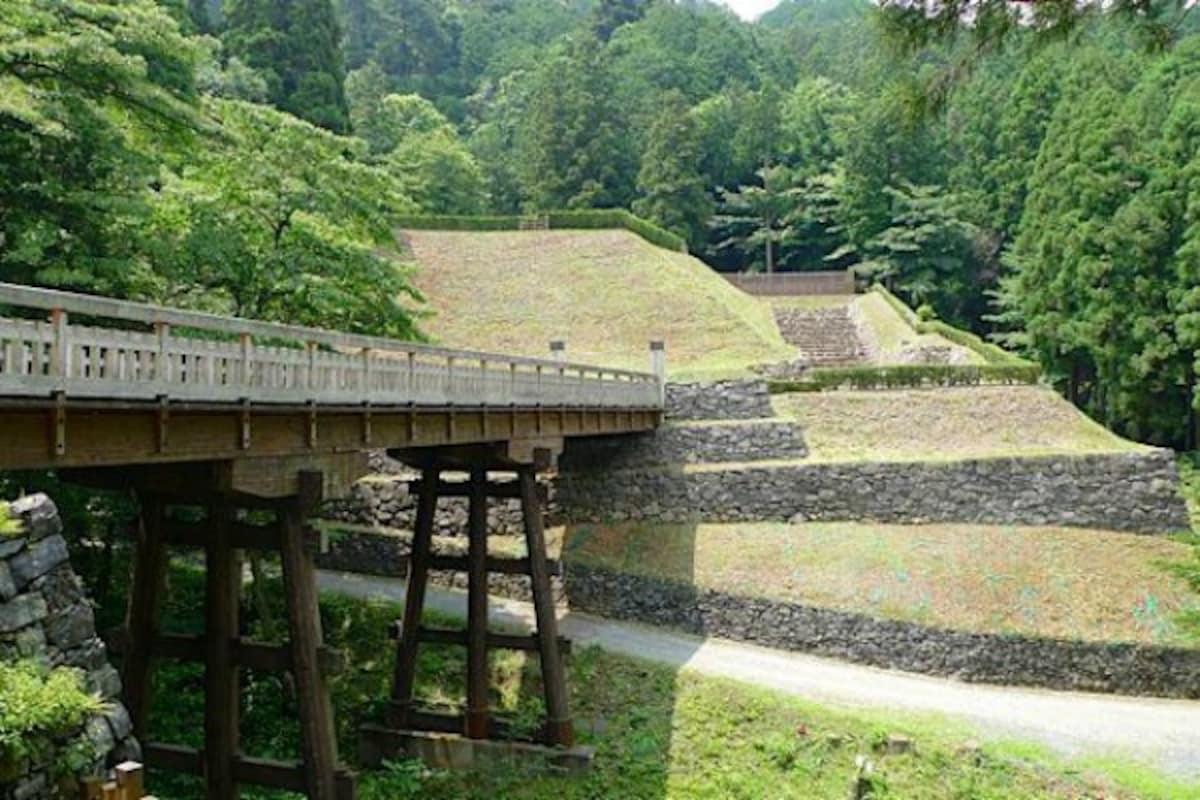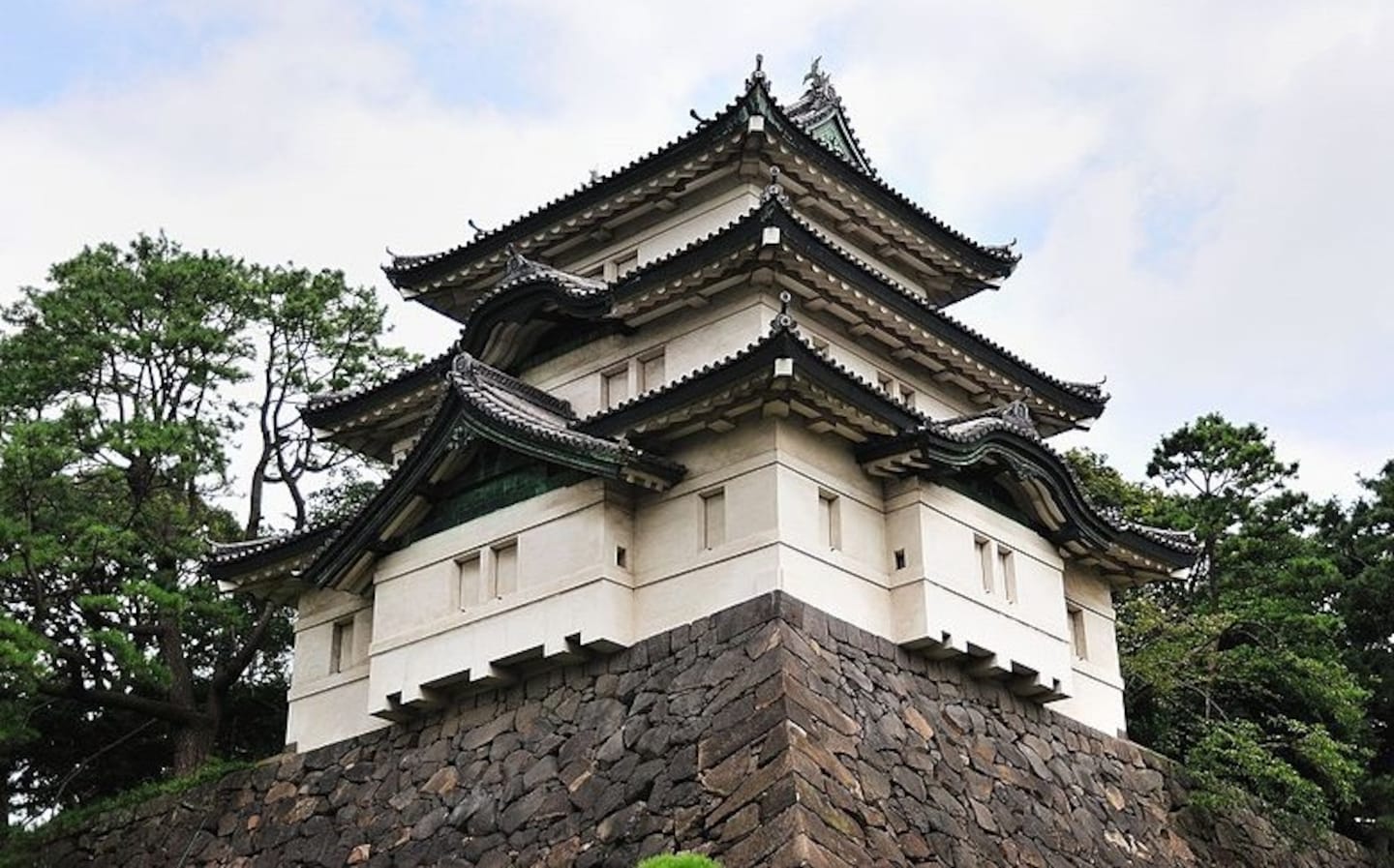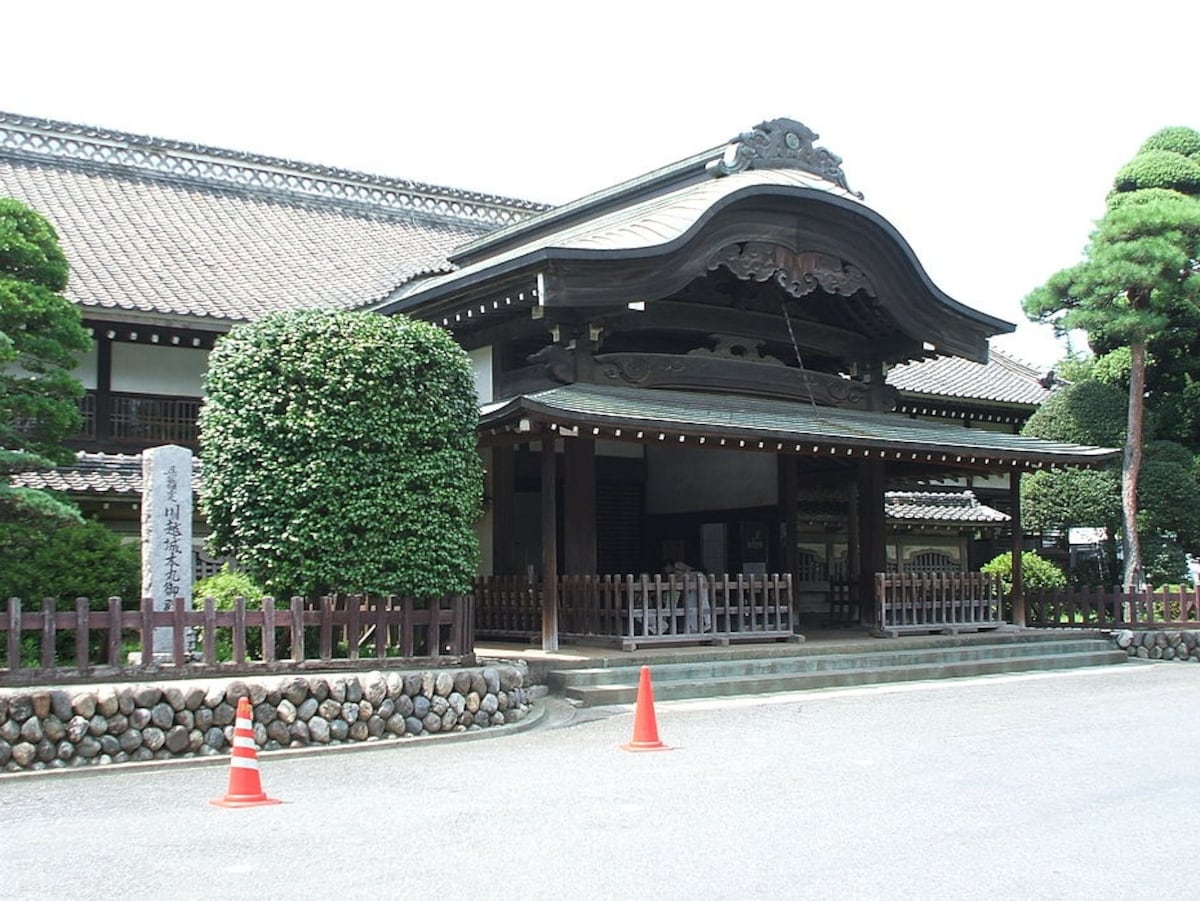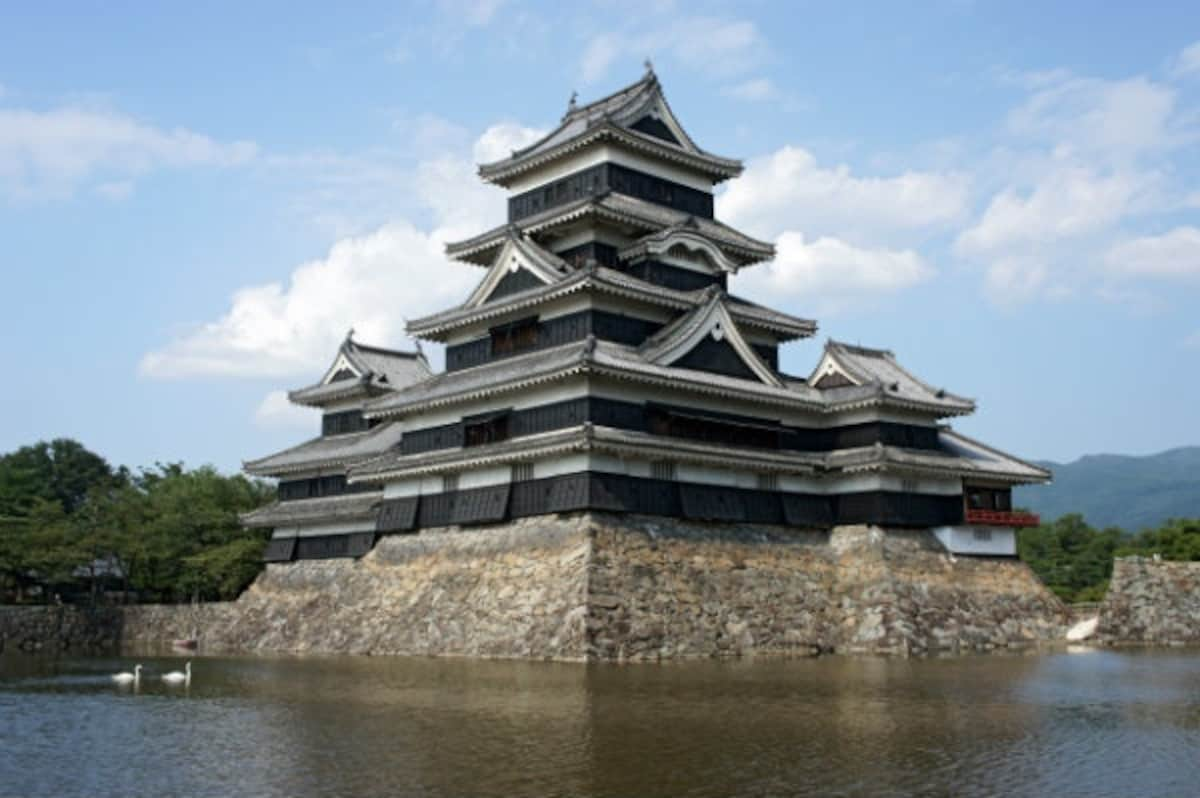Top 6 Castles Around Tokyo
Japan is full of castles, but only 12 so-called “original construction” castles—those with keeps dating back to the 13th to 17th century—can still be seen today. Many of the others can only be identified by their walls or even just their foundations, though a number of keeps were reconstructed in the 20th century to recall their glory days.
By Michael Kanert
http://jcastle.info/view/Hachioji_Castle
The Tokyo area is full of shopping, nightlife and restaurants. While it’s not especially hard to find a shrine or temple squeezed in among the city streets, the area's flat, open ground made it a terrible choice for a defensive military position until Tokugawa Ieyasu made it his center of government early in the 17th century.
So what’s a Tokyo-based castle lover to do? Just look a little further out into the greater Tokyo area! Right next door, Chiba Prefecture is filled with the remains of a dozen castles (admittedly, all ruins or reconstructions), and there are at least six castles perfectly accessible from Tokyo that can more than slake your thirst for the days of the samurai.
6. Hachioji Castle (Western Tokyo)
https://www.youtube.com/watch?v=Ceuu6bn2uAI
Hachioji Castle was built in the late 1570s, transforming virtually all of Mount Fukazawa into an impregnable fortress. Even today, the mountain is better known as Shiroyama: Castle Mountain.
The Hojo were the most most powerful clan in the Kanto region in the late 16th century. When their main stronghold at Odawara Castle was besieged by the forces of Toyotomi Hideyoshi in 1590, the Hojo sent forces sent from Hachioji to shore up the defenses, leaving the mountaintop castle depleted. When Toyotomi forces arrived, they were able to take Hachioji Castle in a day, burning it to the ground and leading to the deaths of some 25,000 people.
No buildings remain today, but the formidable walls, bridge and entrance are enough to evoke memories of the once-mighty Hojo Clan, with remnants of soot and ash still visible on some of the extensive stone foundations.
The castle area can be accessed by a 10-minute bus ride from JR Takao Station in western Tokyo. If you speak Japanese, be sure to engage one of the volunteer guides for a free tour. The Tono no Michi (Lord's Trail) up the back of the mountain is particularly recommended.
5. Kawagoe Castle's Honmaru Goten (Kawagoe, Saitama)
Kawagoe Castle was founded in 1457 by Ota Doshin and his son Ota Dokan, who also built Edo Castle. Kawagoe Castle fell to the Hojo Clan in 1537, who then lost it to Toyotomi Hideyoshi when he attacked the region in 1590. It then passed from Toyotomi to Tokugawa Ieyasu, who would ultimately go on to establish the centuries-long Tokugawa Shogunate.
Kawagoe was important as both a trade city and a strategic defensive point north of Edo (Tokyo), the Tokugawa's base of power. While the city remains a mecca for historical structures from this period, the castle itself was dismantled beginning in 1870 following the Meiji Restoration.
All that remains today is the Honmaru Goten, the entrance and main hall used as waiting rooms for feudal lords, constructed in 1848. Featuring a garden and spacious tatami rooms, the structure remains significant as one of the very few remaining palaces from Japan's feudal period, and the closest castle to Tokyo that's open to the public.
Be sure to check holidays before visiting, as the Honmaru Goten tends to be closed on non-holiday Mondays and every fourth Friday.
(Photo by Japanese Wikipedia user Twilight2640, CC 表示-継承 3.0)
4. Kanayama Castle (Ota, Gunma)
Kanayama Castle in Ota City, Gunma, was constructed by Iwamatsu Iezumi in 1469. Built atop the rugged terrain of a 239-meter (784-ft) mountain, it withstood a number of fierce attacks in the 16th century. But when its lords were captured by the Hojo Clan in 1584, it was turned over in exchange for their release, and the castle was subsequently decommissioned when the Hojo fell from power in 1590.
While the site is now only a ruin, it's well maintained and extensively signposted in Japanese. The Ote Koguchi (the main entrance to the castle, pictured), the Hi-no-Ike (Sun Pond) and the Tsuki-no-Ike (Moon Pond) have now been reconstructed, and the site is used as a park.
Ota City can be reached in about an hour from Kita-Senju Station, and the castle is about 4 kilometers (2.5 miles) north of Ota Station. Unfortunately, none of the local bus services head to the castle, so you'll either have to walk or take a taxi from the north side of the station.
3. Odawara Castle (Odawara, Kanagawa)
https://www.youtube.com/watch?v=FkgLo4TCGTc
After Hojo Soun captured a relatively simple hilltop fortification from the Omori Clan in 1495, he began the expansion of what would become the seat of Hojo power: Odawara Castle. At the height of their strength, the Hojo would control much of Kanto, with castles in what are now Chiba, Ibaraki, Saitama and Kanagawa.
While Odawara Castle withstood a number of attacks from some of the strongest warlords of the Warring States Period—including both Uesugi Kenshin and Takeda Shingen—it finally fell to the vastly superior forces of Toyotomi Hideyoshi in 1590, signifying the end of Hojo power and the successful conclusion of Hideyoshi's efforts to unify all of Japan under his rule. In fact, the castle ultimately fell without a fight: Toyotomi simply intimidated the Hojo into submission by surrounding their head castle with 200,000 troops, engaging in a three-month party that even included Toyotomi's concubine, Yodo-dono, and his tea master Sen no Rikyu, noted as having had some of the most significant influence on Japanese tea ceremony.
Following the redesign of Edo Castle under the Tokugawa Shogunate, Odawara Castle was scaled down to reduce any threat to the shogun's power in the region. The castle was finally pulled down completely between 1870 and 1872 following the Meiji Restoration. Parts of the original moat and stone wall remain, however, and the castle's three-tiered, five-story donjon was reconstructed out of reinforced concrete in 1960.
The castle grounds now include a bailey and several gates that have also been reconstructed, while a collection of historical armor, weapons and artifacts can be seen on-site. The observatory at the top of the donjon overlooks the city of Odawara and Sagami Bay. Accessible within minutes from Odawara Station, you can't miss the castle as you pass by Odawara on the Tokaido Line.
2. Tokyo Imperial Palace (Central Tokyo)
https://www.youtube.com/watch?v=iPsB9DO8Zho
Edo Castle was originally built by Ota Dokan for the Uesugi Clan in 1457. It later came under control of the Hojo Clan, but then fell into the hands of Toyotomi Hideyoshi in 1590, who bequeathed it to Tokugawa Ieyasu.
Construction of the new and expanded castle began in 1593, and was only completed in 1636 under the third Tokugawa shogun, Iemitsu. The 5-kilometer (3.1-mile) interior moat was guarded by ramparts up to 20 meters (66 ft) high, while the 15-kilometer (9.3-mile) outer wall stood as high as 12 meters (39 ft). Forming the seat of the Tokugawa Shogunate's power for some 250 years, a number of modern Tokyo places still take their names from the massive fortification's 36 gates, or mon, such as Hanzomon and Toranomon, while its various bridges, or hashi, are recalled in locations such as Kandabashi, Suidobashi and Iidabashi, where parts of the stone walls can still be seen.
Emperor Meiji moved from Kyoto to Edo Castle following the Meiji Restoration in 1868. Along with changing the name of Edo to Tokyo (literally, "Eastern Capital"), the castle was renamed as the Tokyo Imperial Palace, or Kokyo (literally, "Imperial Residence"). It is now the primary residence of the Emperor of Japan, and includes the private residences of the Imperial Family. While the Imperial Residence itself is generally off limits to visitors, vast sections including Kokyo Gaien (the Imperial Palace Outer Garden), Kokyo Higashi Gyoen (the Imperial Palace East Garden) and Kita-no-Maru Park are all open to the public free of charge. To visit the area around the palace itself, you need to make reservations in advance, which can be done online here.
Though reduced from its former glory, the total area of the Imperial Palace still comprises some 3.41 square kilometers (1.32 square miles), seemingly pulling down the sky as it stretches out beneath the steel towers of modern Tokyo. In spite of the massive damage the city endured through earthquakes and war in the 20th century, roughly 20 of the castle's original buildings remain, and sections of the stonework can be seen throughout the city. The Niju-bashi Bridge on the southeast side is a particularly popular photo spot, and the 5-kilometer circuit around the inner moat is now a popular jogging course. Meanwhile, the northwestern Chidorigafuchi section of the moat is particularly popular when illuminated at night during cherry blossom season in early April.
1. Matsumoto Castle (Matsumoto, Nagano)
By some accounts second only to Himeji Castle, Matsumoto Castle is among the most outstanding castles in Japan. It was originally named Fukashi Castle when construction was begun in 1504 under Shimadachi Sadanaga of the Ogasawara Clan. But the castle was attacked and captured by Takeda Shingen in 1550, and following the defeat of the Takeda Clan by Oda Nobunaga in 1582, the castle changed hands a number of times before finally falling under the control of supporters of Toyotomi Hideyoshi, who renamed the former Takeda bastion Matsumoto Castle.
The castle was completed in its current form under Ishikawa Kazumasa and his son Yasunaga, Hideshoshi's retainers, somewhere between 1593 and 1594. Consisting of a main keep, or donjon, as well as an interconnected secondary keep and three ancillary towers, it came to be nicknamed the Crow Castle (Karasu-jo) due to its black exterior, becoming the seat of the Matsumoto Domain under the Tokugawa Shogunate.
After the fall of the shogunate, local preservation efforts managed to save the castle from demolition in the 1870s, and it has now been designated a National Treasure. Matsumoto Castle represents the closest original-construction castle to Tokyo, and its 30-meter-high (98-ft), five-tiered, six-storied central donjon is among of the oldest in Japan. The second floor of the donjon features a gun museum with a collection of guns, armor, and other weapons, while the purely aesthetic Moon Viewing Tower (Tsukimi Yagura), built during more peaceful times around 1633, offers a rare contrast to the other towers' martial style of construction.
Matsumoto is roughly two-and-a-half hours from Shinjuku Station via the Super Azusa Limited Express on the Chuo Line, and the castle is about a 15-minute walk northeast from Matsumoto Station. It's a little further out than any of the other castles on this list, and it is undisputedly worth it.







